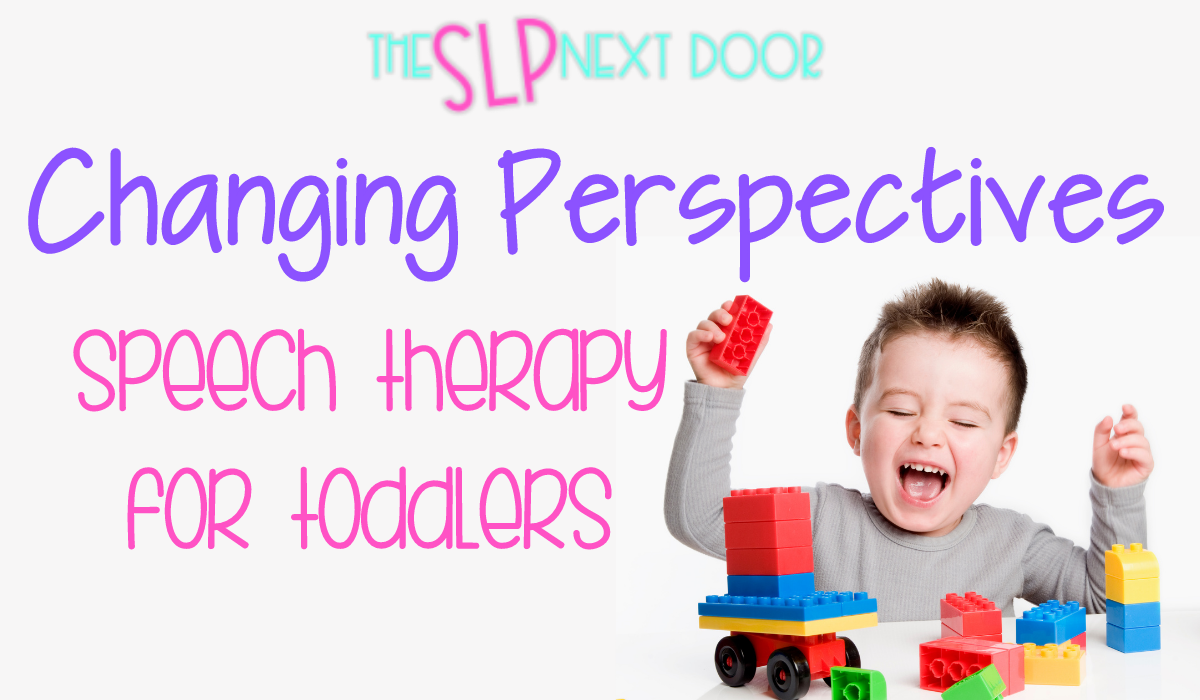I always ask parents, “How is your toddler communicating with you?” Asking this question helps them begin to look at their toddlers from a different perspective. Speech therapy for toddlers requires a complete shift in your mindset. With this population, the first objective for speech therapy should be improving their overall communication skills.
One of the first things I do when I meet a toddler is determine how they communicate.
Why?
Communication happens in a variety of ways: verbal speech, body language, devices (including our own personal devices), and beyond.
Evaluating Toddlers
Any time I do an initial evaluation, parents begin to talk about what their toddlers aren’t doing:
“I thought everything was alright until she was around other kids, and then I realized she wasn’t doing what they did.”
“He doesn’t say anything; he just points and grunts.”
“She has a few signs and gestures but won’t say the words!”
“I know he’s trying to tell me something, but I have no idea what it is and he’s throwing fits when he doesn’t get what he wants”.
Let me just also add here that there is no such thing as a bad toddler. There is such a thing as a frustrated, overstimulated, or overwhelmed toddler- but toddlers themselves are not bad or manipulative.
How does your toddler communicate?
It is important to see how a toddler communicates so that we know where to build from.
When I ask parents, “How is your toddler communicating with you?” I always see a shift. Asking this question brings an opportunity to educate and remind parents that, even as grown-ups, we use a variety of skills to communicate – and so do our toddlers. It also helps them to look at their toddlers from a different perspective.
Initially, it doesn’t matter if their form of communication is what we call “the right way.” What matters is that we understand how the toddler is getting their needs met. Determining how a toddler communicates (or gets their message across) should be done in evaluations, but it is also something that most standardized tests do not include when determining strengths and weaknesses.
Here’s how you can do it: in addition to completing a standardized assessment, you can also just ask parents a few questions:
“How does your child let you know they want something?”
“Does your child make choices? If so, how do they let you know their choice?”
“What happens when your child does not get what they are asking for?”
These open-ended questions encourage a conversation between clinician and caregiver about how and what communication can look like. You can find a copy of the questions I ask parents in my FREE Toddler Toolbox!

Speech Therapy Goals
It can be hard to determine what goals are appropriate when it comes to speech therapy for toddlers, right? Those standardized assessments list so many deficits and delays that it can be hard to determine where to start.
I ask myself: what can we do that is functional while increasing their communication? You want to choose goals that can be easily implemented into speech therapy activities, are easy for a parent to practice outside therapy sessions, and can build on a toddler’s current skill set.
As toddlers progress with their speech therapy goals, you will gain more insight into strengths and weaknesses in development and can begin to get more specific with goals.




One Response